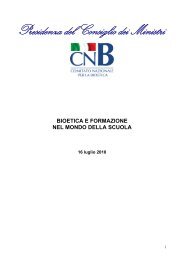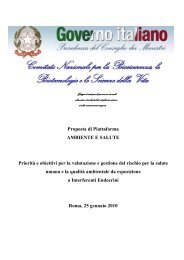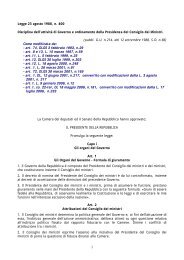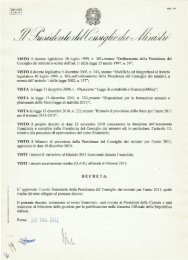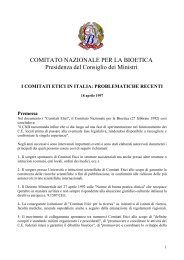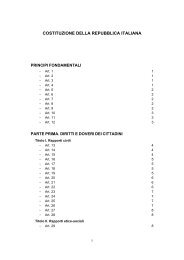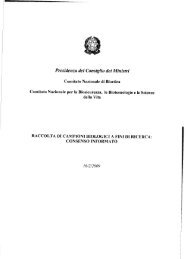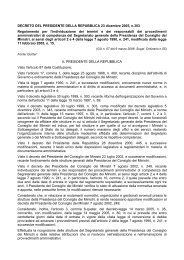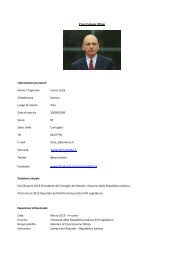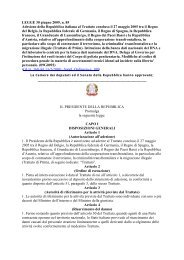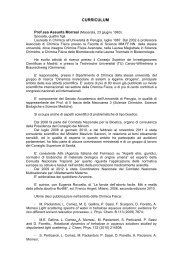President
President
President
You also want an ePaper? Increase the reach of your titles
YUMPU automatically turns print PDFs into web optimized ePapers that Google loves.
The training of teachers is a problem which, as we have seen, is<br />
concentrated on in the documents dedicated to education in bioethics: this<br />
formation is particularly complex given the interdisciplinary nature of the<br />
subject. In order to ensure the dignity and sense of education in bioethics as<br />
citizenship education, this formation can not be left entirely to good will and<br />
chance, but must take place through institutional channels or be guaranteed by<br />
institutions. It is important in this regard to include:<br />
- that interdisciplinary bioethics modules are to be assigned to<br />
teaching staff that has been adequately trained either by means of university<br />
courses or via acquisition through in itinere formation;<br />
- that the MIUR should promote bioethical formation of the teaching<br />
staff chosen for bioethics education, through the provision of in itinere training<br />
programmes;<br />
- that in itinere formation (master, advanced courses, refresher<br />
courses) should be entrusted to Universities or Research Centres and/or<br />
Training Centres, that have been accredited by the MIUR.<br />
The other question, brought about from the interdisciplinary nature of<br />
bioethics, but which moves from the structural level to that of content, concerns<br />
the method by which to educate in bioethics and the teaching materials to use.<br />
Briefly, it can be reduced to: how to educate in bioethics?<br />
This question does not only derive from the interdisciplinary nature of<br />
bioethics, but it also leads us to its other aspect, pluralism: it is a question of<br />
means, in which these two characteristics, that make the task of education in<br />
bioethics complex and particularly difficult, are convergent.<br />
9.2.b. Pluralism and its questions<br />
If we go back to the accepted definition of bioethics in the introduction we<br />
see that bioethics is said in the plural form in many ways: due to the different<br />
ethical references and also due to the different paradigms by which bioethical<br />
questions can be rethought. The question which has now become customary is<br />
which ethics for bioethics? 379 contains within it another question, which<br />
anthropology for bioethics? Alongside these we can place the methodological<br />
question that has perturbed bioethical literature since the 80’s: which paradigm<br />
for bioethics?<br />
The same questions recur in education in bioethics, they can not be<br />
evaded: they are the questions that drive the transition from the teaching of<br />
bioethics, which should give clear information on its history, the different ways<br />
in which it is articulated through diverse ethics, anthropologies and<br />
paradigms, to education in bioethics, which should provide the learner with the<br />
means to orient himself within the wide interdisciplinary and pluralistic context<br />
delineated in front of him, elaborating an independent critical opinion on major<br />
issues, and gaining the ability to argue and discuss with others, accepting the<br />
challenge of comparison with different and sometimes conflicting moral<br />
judgments.<br />
It is the transition which, as noted, was insisted on in the Opinion of the<br />
NBC Bioethics and education in the health care system, from “the ability to<br />
379 E. AGAZZI (ed.), Quale etica per la bioetica, Franco Angeli, Milan 1990.<br />
287




